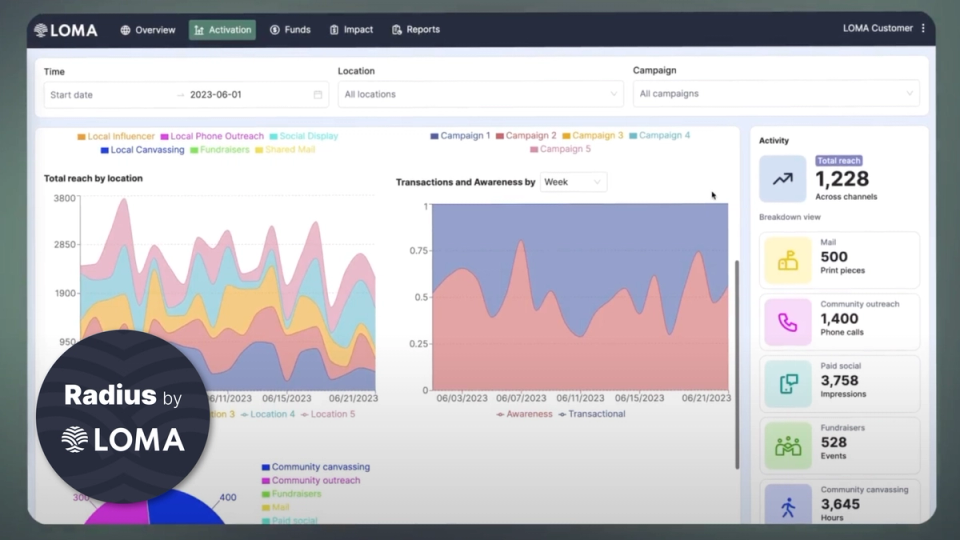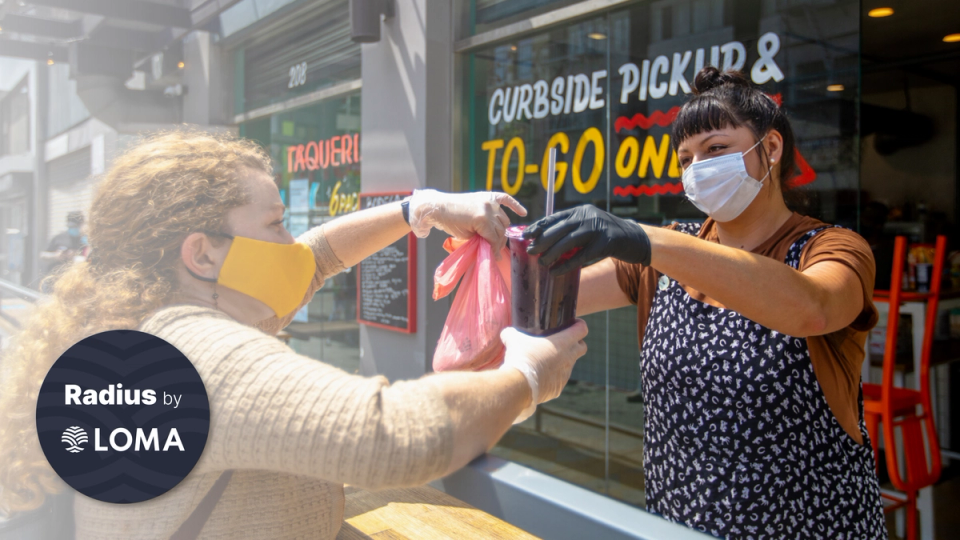Reading Time: 5-7 minutes
As businesses everywhere felt the pandemic's impact, Local Store Marketing underwent transformative changes. From its foundational approaches before the pandemic to the innovative practices today, its journey sums up the resilience of the sector.
Before the global health crisis, the service industry, especially restaurants, were the focal points of LSM. Vibrant, bustling, and locally-connected, they stood as testament to the strength and reach of targeted local marketing strategies. However, as the pandemic began its course, these very establishments that thrived on community engagement and footfall were in jeopardy.
The statistics highlight the severity of the situation. Prior to the pandemic, the service industry was a powerhouse, accounting for approximately 13.5 million restaurant-related jobs. But by April 2020, the resulting economic tremors led to unemployment rates in the leisure and hospitality realms touching an alarming 39.3%. Further underscoring the scale of the devastation, over 110,000 restaurants have ceased operations or are on the verge due to the pandemic’s economic implications, as cited in this study. [1]
Such figures also translated to a seismic shift in LSM strategies. With foot traffic dwindling, the pre-pandemic LSM playbook was no longer viable.
Bouncing Back Stronger: Embracing Business Resiliency as the Fiscal Year Concludes
In the face of such adversity, the LSM landscape didn't just adapt; it innovated. There was a marked shift from traditional in-person engagement strategies to digitally-anchored ones. Geo-targeted advertising, virtual events, and loyalty programs powered by analytics became the new normal. Brands didn't just delve into community support initiatives, they deeply embedded themselves in local efforts when it mattered most. Recognizing the crucial role of front-line workers during the pandemic, businesses leaned heavily into their communities. They not only aligned with local causes but also actively supported those at the front line, raising funds, donating essential goods, and offering various forms of assistance. This proactive engagement not only provided immediate relief but underscored the critical importance of integrating with the community, especially in times of dire need.
Furthermore, as the fiscal year nears its end, what's evident is the local store marketing's role as the backbone of business resilience. It's no longer just about promotions or brand visibility. It's about forging meaningful, lasting connections with the local customer base, understanding their evolving preferences, and catering to them with unparalleled precision.
As we delve deeper into this adaptive journey of Local Store Marketing, it becomes imperative to understand the timeline of events that led to these transformative shifts. Next, we'll chart the course of the pandemic, marking the significant milestones that have shaped businesses and LSM strategies.
Before the Pandemic: A Period Marked by Consistency in Growth and Expansion
In the pre-pandemic era, businesses, particularly in the service sector, thrived on consistent growth. Local Store Marketing emphasized community engagement, cultivating loyal clientele, and building brand ambassadors at a local level. It was a time when face-to-face interactions, offline events, and direct communications were paramount. Expansion wasn't merely a vision but a lived reality.
Pandemic Era: Managing Unexpected Downturns and Sudden Disruptions
The sudden onset of the pandemic flipped the world as we knew it. With it, came unforeseen challenges.

This tumultuous era demanded agility from LSM. Traditional business avenues were blocked, necessitating rapid shifts from offline realms to digital spaces. But even in these desperate circumstances, the power of community and strategic local store marketing shone brightly. A pivotal revelation was the inherent strength of franchise models during crises. Referring to the inforgraphic below, this was not just a testament to the robust support infrastructures in place but highlighted the importance of LSM.

Indeed, franchised businesses were projected to outperform their independent counterparts due to the formidable backing from their franchisors and the invaluable resources and benefits accrued through community-based marketing strategies.
Post-Pandemic Reawakening: Embracing Digital Maturity and Leading the Way in Innovation
Emergence from the pandemic signaled a fresh appreciation for the value of adaptability. LSM found a harmonious blend of offline and online strategies.
This revival saw a renewed thirst for innovation in LSM. Brands started experimenting with cutting-edge approaches like interactive virtual events, augmented reality, and creating unique, personalized experiences for consumers. Once again, franchises emerged as frontrunners, demonstrating resilience and adaptability. This success can be attributed not just to the robust support from their community and franchisors, but also to the entrepreneurial spirit innate within the franchise systems. [2]
The pandemic's timeline isn't merely a sequence of events; it's a chronicle of adaptability, resilience, and the enduring spirit of businesses. Through each phase, it’s apparent that our capacity to adapt and evolve charts our way forward.
Reviving the Franchise Industry: SAAS as the Core
In today's post-pandemic world, Software-as-a-Service (SaaS) solutions have emerged as the unsung heroes, playing a pivotal role in rejuvenating the franchise industry, especially within the restaurant sector. Their influence spans from providing vital infrastructural support to reshaping customer interactions in this evolving market landscape.
The smooth transition led by SaaS tools like DoorDash, UBER (for delivery), and OLO (for online ordering) has been instrumental. Not only did these platforms make it more convenient for the consumer, but they also provided immense relief to the business owner. Faced with the sudden disruptions of the pandemic, restaurants found solace in these platforms. From the initial stages of onboarding to the intricate phases of marketing strategy implementation, SaaS solutions stood firm, ensuring an efficient and streamlined process. Their adaptability and scalability have not only navigated restaurants through the pandemic's challenges but also have been a driving force behind the industry's resurgence in the subsequent era.
“There’s a real need for velocity as multi-unit and franchise brands look for ways to adapt to consumer demands. Technology will be instrumental in closing the gap and creating valuable customer experiences. Brands and multi-unit systems alike need transparency in how their operations impact their revenue. SaaS has an enormous opportunity to fill this gap in a traditionally underserved market. LOMA’s platform highlights areas of opportunity through analytics and robust reporting.” — Shianna Noetscher, Head of CX at LOMA Funds, on the significance of SaaS platforms two years post-pandemic.
However, with changes come evolving customer expectations. The pandemic saw a surge in meeting the customer demands. Restaurants, in a bid to stay afloat, ventured into uncharted territories, offering enhanced discounts to cater to the boom in digital ordering. As we stepped into 2022, this trend didn't subside. Customers, now more than ever, are on the lookout for continuous promotions, elevated loyalty rewards, and innovative ways to engage with their go-to eateries. With this type of competitive shift, brands must stay top of mind. Here again, SaaS platforms have come to the rescue, equipping restaurants with tools and analytics to understand, predict, and meet these ever-shifting demands, ensuring longevity and sustained growth in this dynamic environment.
In Conclusion: LOMA Funds - A Game-Changer for the Franchise World
With the aftermath of the pandemic taking its toll on businesses, the value of robust franchisor support and the undeniable benefits of community resources have never been clearer.
In this context, the ascendancy of Local Store Marketing (LSM) cannot be overlooked. An example of this adaptability in action is evident in the Dunn Brothers Case Study, refer to the table below:

However, where does LOMA fit into this intricate puzzle? Simply put, it's evident that LOMA is not just part of the change - it's leading it. LOMA sets itself apart with its distinct focus. It isn't about generic SEO or digital ads; it's about delivering impactful local marketing strategies right at the doorstep of each individual location for multi-unit brands.
What truly elevates LOMA's approach is its unique offering. As highlighted in the LOMA Funds White Paper, the marketplace today is densely populated, causing franchises to grapple with establishing a strong presence. The solution lies in leveraging the untapped potential of Local Store Marketing spend.
The past few years have tested the franchise industry's strength and spirit. From facing unexpected challenges during the pandemic to adapting to new normals, businesses have had to learn, evolve, and often reinvent themselves. The emergence of platforms like LOMA underscores the undeniable importance of local store marketing and its pivotal role in redefining how franchises operate.
As businesses continue to navigate the evolving landscape, the emphasis on community-centric, data-driven, and strategic local marketing becomes clearer. The case studies and insights shared throughout this blog bears testimony to the transformative power of Local Store Marketing.



